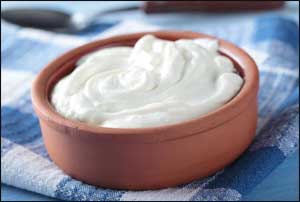- Home
- Editorial
- News
- Practice Guidelines
- Anesthesiology Guidelines
- Cancer Guidelines
- Cardiac Sciences Guidelines
- Critical Care Guidelines
- Dentistry Guidelines
- Dermatology Guidelines
- Diabetes and Endo Guidelines
- Diagnostics Guidelines
- ENT Guidelines
- Featured Practice Guidelines
- Gastroenterology Guidelines
- Geriatrics Guidelines
- Medicine Guidelines
- Nephrology Guidelines
- Neurosciences Guidelines
- Obs and Gynae Guidelines
- Ophthalmology Guidelines
- Orthopaedics Guidelines
- Paediatrics Guidelines
- Psychiatry Guidelines
- Pulmonology Guidelines
- Radiology Guidelines
- Surgery Guidelines
- Urology Guidelines
Higher consumption of Yogurt and cheese reduces risk of heart attack and stroke

The findings from a population-based study suggest an inverse association between total fermented dairy intake and cardiovascular disease CVD risks such as stroke and heart attack, which may partly be accounted for by other dietary components. The study appeared in the Journal of Nutrition.
Despite advances in improved primary prevention and medical treatment, Type 2 diabetes and cardiovascular diseases (CVD) are the leading cause of death and morbidity in India and worldwide. Dairy, fermented in particular like curd, buttermilk, etc., is a vital component of an authentic Indian meal. Low-fat dairy is considered to be a good source of calcium and other nutrients for women of any age. Consumption of fermented dairy products such as curd, cheese, etc and their association with type 2 diabetes miletus and cardiovascular disease still remains unclear. The present study although conducted in an Australian setup aims to ascertain the influence of fermented dairy food on type 2 millets and cardiovascular disease and provides a cue for further research on this subject.
The Australian Longitudinal Study on Women's Health included Australian women (aged 45–50 y) at baseline in 2001, who were followed up through 5 surveys until 2016. Dietary intake was assessed through the use of a validated 101-item FFQ at baseline. Main study outcomes were self-reported physician-diagnosed T2DM and CVD. Logistic regression models adjusted for sociodemographic and lifestyle factors were used to estimate the association between dairy intake and T2DM and CVD risk.
- Of 7633 women free of diabetes at baseline, 701 developed T2DM during a maximum 15-y follow-up period.
- Women in the highest tertile intake of yogurt had lower adjusted T2DM likelihood compared to those in the smallest tertile.
- This relation became nonsignificant after adjustment for dietary variables and total energy intake.
- Of 7679 women free of CVD at baseline, 835 cases of CVD were reported during follow-up.
- High intake of yogurt and total fermented dairy was associated with lower CVD risk than observed in the lowest tertile of dairy product intake.
- No associations were found with other dairy groups.
"The findings from this population-based study of Australian women suggest an inverse association between total fermented dairy intake and CVD risk, which may partly be accounted for by other dietary components." the authors conclude.
For further reference, please click on the link: https://doi.org/10.1093/jn/nxz128

Disclaimer: This site is primarily intended for healthcare professionals. Any content/information on this website does not replace the advice of medical and/or health professionals and should not be construed as medical/diagnostic advice/endorsement or prescription. Use of this site is subject to our terms of use, privacy policy, advertisement policy. © 2020 Minerva Medical Treatment Pvt Ltd